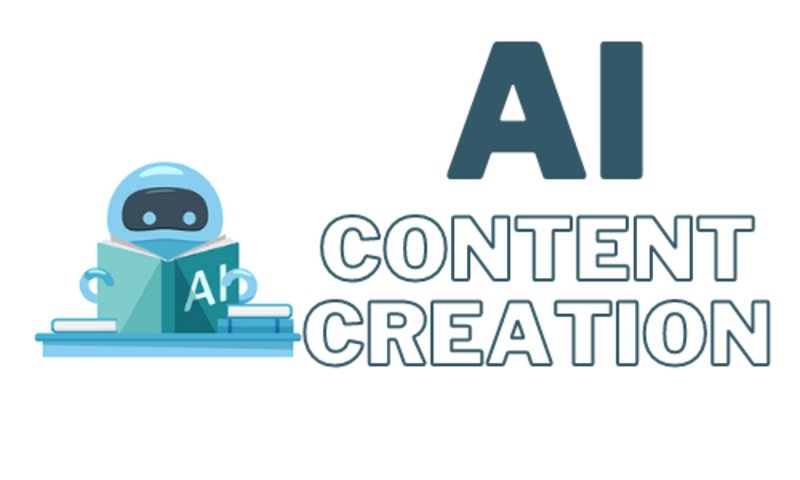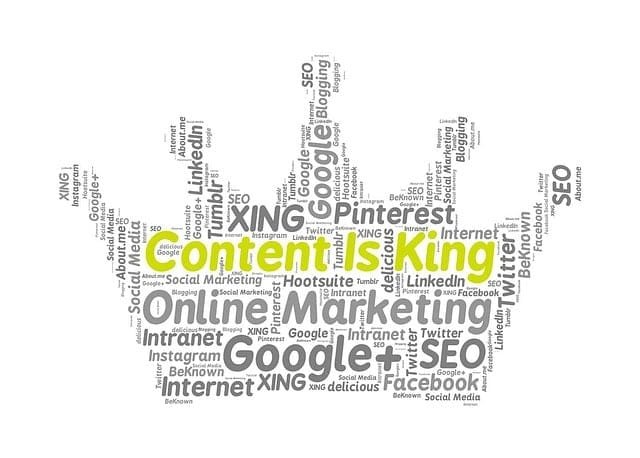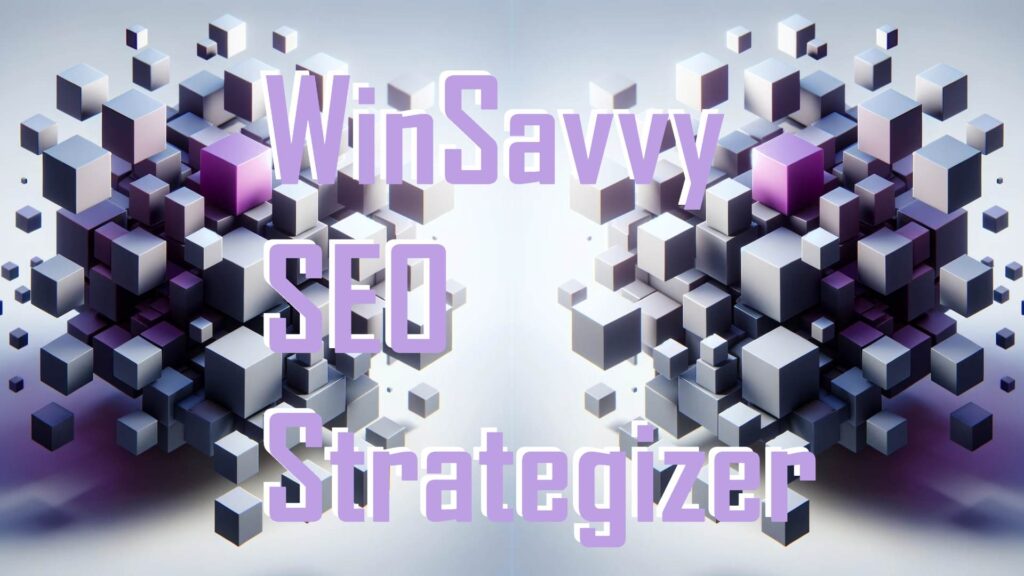Hey there! Ever felt like you’re spending too much time on writing and not enough on the other aspects of your business? Or maybe you’re struggling to keep up with the constant demand for new, engaging content? If so, you’re not alone. Many marketers and business owners face these challenges. The good news is that artificial intelligence (AI) can help. AI tools are revolutionizing the way we create content, making it easier, faster, and more effective. Let’s dive into how AI can improve your content creation process.
Understanding AI in Content Creation
What is AI?
AI, or artificial intelligence, refers to the simulation of human intelligence in machines. These machines are designed to think and learn like humans.
In the context of content creation, AI can assist with tasks like writing, editing, research, and SEO optimization. By using AI, you can streamline your workflow and produce high-quality content more efficiently.
How AI Works in Content Creation
AI tools use algorithms and machine learning to analyze text and generate content. These tools have been trained on vast amounts of data, so they understand language patterns and can predict what comes next in a sentence or paragraph.
When you input a prompt, the AI generates text that matches the style and tone you’re aiming for. This can help you create content that is coherent, engaging, and tailored to your audience.
Benefits of Using AI for Content Creation
Save Time
One of the biggest advantages of using AI is the time you save. Writing high-quality content can be time-consuming, especially if you’re doing it all yourself. AI tools can help you generate content quickly, allowing you to focus on other important tasks.
For example, instead of spending hours brainstorming ideas and writing drafts, you can use AI to create a first draft in minutes. This leaves you more time to refine your content and work on your overall strategy.
Improve Quality
AI tools can also help you improve the quality of your content. They can spot grammar and spelling errors, suggest better word choices, and even improve the overall readability of your text.
Tools like Grammarly and Hemingway Editor are great examples of how AI can enhance your writing. These tools analyze your text and provide real-time feedback, helping you produce polished and professional content.
Boost Creativity
AI can also boost your creativity by providing new ideas and perspectives.
If you’re stuck in a rut or struggling with writer’s block, AI tools can help you brainstorm new topics and generate fresh content ideas. By offering different ways to approach a subject, AI can inspire you to think outside the box and create more engaging content.
Enhance SEO
Search engine optimization (SEO) is crucial for getting your content noticed. AI tools can help you optimize your content for search engines by suggesting relevant keywords, analyzing your competition, and providing insights into what your audience is searching for.
Tools like Clearscope and Surfer SEO use AI to analyze top-ranking content and provide recommendations for improving your own content’s SEO. This can help you rank higher in search results and drive more traffic to your site.
Creating High-Quality Content with AI
Starting with a Strong Headline
Your headline is the first thing readers see, so it needs to grab their attention. AI tools can help you craft compelling headlines that are both catchy and relevant.
For example, Jasper (formerly Jarvis) can generate multiple headline options based on your topic, giving you plenty of choices to find the perfect one. A strong headline can increase your click-through rate and draw more readers to your content.
Crafting an Engaging Introduction
An engaging introduction is crucial for hooking your readers and encouraging them to keep reading. AI writing tools can help you write introductions that are interesting and informative.
For instance, Jasper can generate several different opening paragraphs, allowing you to choose the one that best fits your style and audience. An effective introduction sets the tone for the rest of your content and draws readers in from the start.
Structuring Your Content
A well-structured article is easier to read and more engaging. AI tools can help you create detailed and logical outlines that organize your thoughts and ensure you cover all the important points.
Tools like Jasper can generate outlines based on your initial ideas, helping you stay on track and ensuring that your content flows logically from one section to the next.
Writing Clear and Concise Content
Clear and concise writing is key to keeping your readers engaged. AI tools can help you achieve this by suggesting simpler ways to phrase your ideas and highlighting any areas where your writing might be confusing or overly complex.
Grammarly, for example, can provide readability scores and suggest ways to improve clarity. This ensures that your content is accessible and enjoyable to read.
Using Stories and Examples
Stories and examples can make your content more relatable and engaging. AI writing tools can help you come up with relevant anecdotes or examples to illustrate your points.
This makes your content more interesting and easier for your readers to understand. For instance, Jasper can generate content that includes relatable stories and examples, making your articles more compelling and memorable.
Enhancing Content Editing and Proofreading with AI
Real-Time Grammar and Spelling Checks
AI tools like Grammarly and ProWritingAid provide real-time grammar and spelling checks. These tools scan your text for errors and suggest corrections as you type.
For startup founders, this means you can quickly polish your content without needing to spend hours proofreading. These AI tools ensure that your articles are error-free and professional, which is crucial for maintaining credibility and trust with your audience.
Improving Readability
Readability is a critical factor in content engagement. Tools like Hemingway Editor use AI to highlight complex sentences, passive voice, and other readability issues.
They provide suggestions to simplify your text and make it more reader-friendly. For content creators, this means you can ensure your articles are easy to read and understand, which helps keep readers engaged and reduces bounce rates.
Style and Tone Consistency
Maintaining a consistent style and tone across all your content is important for brand identity. AI tools can help you analyze your writing and ensure it aligns with your desired voice.
For instance, Grammarly’s tone detector can assess whether your content sounds formal, casual, optimistic, or assertive. This is particularly useful for startups looking to establish a distinct voice that resonates with their target audience.
Enhancing Content Structure
AI tools can help you refine the structure of your content, ensuring it flows logically and is easy to follow. Tools like Scrivener can assist in organizing long-form content, while others like Jasper can provide suggestions for headings and subheadings.
This helps ensure your content is well-organized and that each section transitions smoothly to the next.
Leveraging AI for Content Research
Efficient Data Collection
Researching for content can be time-consuming, but AI tools can streamline this process. Tools like BuzzSumo and Feedly use AI to aggregate relevant articles, blog posts, and news stories based on your keywords.
This allows you to gather comprehensive data quickly and efficiently. For startup founders, this means you can spend less time on research and more time on content creation and strategy.
Competitive Analysis
Understanding what your competitors are doing can provide valuable insights for your content strategy. AI tools like SEMrush and Ahrefs use machine learning to analyze competitor content and identify their strengths and weaknesses.
These tools can help you discover gaps in your content, find new keyword opportunities, and understand what topics are resonating with your audience. This competitive analysis can inform your strategy and help you create content that stands out.
Audience Insights
Knowing your audience is key to creating content that resonates. AI tools can analyze user data and provide insights into your audience’s preferences, behaviors, and demographics.
Tools like Google Analytics and HubSpot use AI to track how users interact with your content, what topics they are interested in, and how they navigate your site. This information can help you tailor your content to meet your audience’s needs and interests, increasing engagement and loyalty.
Optimizing Content for SEO

Keyword Optimization
AI tools can assist in keyword research and optimization, ensuring your content ranks higher on search engine results pages (SERPs).
Tools like Clearscope and Surfer SEO analyze top-performing content and suggest relevant keywords to include in your articles. They can also help you understand keyword density and placement, making sure your content is optimized without feeling forced or unnatural.
Meta Descriptions and Title Tags
Optimizing your meta descriptions and title tags is crucial for SEO. AI tools can help you craft compelling and keyword-rich meta descriptions and title tags that attract clicks.
Tools like Jasper and Copy.ai can generate multiple variations for you to choose from, ensuring your content is both SEO-friendly and engaging.
Analyzing and Improving Content Performance
Once your content is published, it’s important to analyze its performance and make necessary improvements. AI tools can track metrics like page views, time on page, bounce rate, and conversion rates.
Tools like Google Analytics and Hotjar provide detailed insights into how users interact with your content. This data allows you to make informed decisions about what content to produce next and how to optimize existing content for better performance.
Content Refresh and Updates
Keeping your content up-to-date is important for maintaining its relevance and SEO ranking. AI tools can help you identify which articles need updating based on performance data and search trends.
They can suggest new keywords, additional information, and content improvements. This ensures that your articles remain current and continue to attract traffic.
Personalizing Content for Different Audiences
Tailoring Content for Specific Segments
Personalization is key to engaging different audience segments. AI tools can analyze user data to create detailed audience profiles and suggest content that resonates with each segment.
For example, tools like HubSpot and Marketo use AI to track user behavior and preferences, allowing you to tailor your content to different demographics, industries, or interests. This targeted approach can increase engagement and conversion rates.
Dynamic Content Generation
Dynamic content changes based on user behavior and preferences. AI tools can help you create dynamic content that adapts to each visitor.
For instance, you can use AI to personalize blog post recommendations, product suggestions, or call-to-action buttons based on the user’s previous interactions with your site. This level of personalization can enhance the user experience and increase the likelihood of conversions.
Automating Email Campaigns
AI can also improve the effectiveness of your email marketing campaigns. Tools like Mailchimp and Sendinblue use AI to segment your email list, personalize email content, and optimize send times.
This ensures that your emails are relevant and engaging, increasing open and click-through rates. For startups, this means you can maintain a strong connection with your audience without spending a lot of time on manual email management.
Integrating AI into Your Content Strategy
Setting Clear Goals
Before integrating AI into your content strategy, it’s important to set clear goals. Define what you want to achieve with your content, whether it’s increasing brand awareness, driving traffic, generating leads, or boosting sales. Having clear goals will help you choose the right AI tools and measure their effectiveness.
Choosing the Right Tools
There are many AI tools available, each with its own strengths and weaknesses. Research different options and choose the ones that best meet your needs.
Consider factors like ease of use, integration with your existing tools, and the specific features you need. Start with a few key tools and expand your toolkit as you become more comfortable with AI.
Training and Implementation
Once you’ve chosen your AI tools, take the time to train your team and implement them effectively. Provide training sessions and resources to help your team understand how to use the tools and integrate them into their workflow.
Monitor the implementation process and make adjustments as needed to ensure smooth adoption.
Measuring Success
Track the performance of your AI-powered content strategy and measure it against your goals. Use analytics tools to monitor key metrics and gather feedback from your audience.
Regularly review your data and adjust your strategy as needed to optimize your results. This continuous improvement process will help you get the most out of your AI tools and achieve your content goals.
Embracing AI for Continuous Content Improvement
Leveraging AI for Feedback and Refinement
Continuous feedback is essential for refining your content and ensuring it meets your audience’s needs. AI tools can provide real-time feedback on various aspects of your writing, such as clarity, tone, and engagement.
For instance, tools like Grammarly not only correct grammar and spelling but also offer suggestions to improve readability and overall quality. This constant stream of feedback helps you continuously improve your content, making it more effective and engaging over time.
Conducting A/B Testing
A/B testing involves comparing two versions of a piece of content to see which one performs better. AI tools can simplify this process by automatically creating variations of your content and analyzing their performance.
Tools like Optimizely and VWO use AI to run A/B tests and provide insights into which version resonates more with your audience. This allows you to make data-driven decisions and optimize your content for better engagement and conversions.
Predictive Analytics for Content Strategy
Predictive analytics uses AI to forecast future trends based on historical data. For content creators, this means you can anticipate what topics and formats will be popular in the future and plan your content strategy accordingly.
Tools like HubSpot and Marketo offer predictive analytics features that can help you identify upcoming trends and tailor your content to meet future demand. This proactive approach ensures that your content remains relevant and ahead of the curve.
Sentiment Analysis
Understanding how your audience feels about your content is crucial for creating engaging and impactful articles. AI-powered sentiment analysis tools can analyze comments, reviews, and social media mentions to gauge public sentiment.
Tools like MonkeyLearn and Lexalytics use AI to assess the emotional tone of user feedback, helping you understand what resonates with your audience and what doesn’t. This insight allows you to adjust your content strategy to better meet your audience’s needs and preferences.
Enhancing Visual Content with AI

Image and Video Creation
Visual content is a powerful way to engage your audience, and AI can help you create stunning images and videos. Tools like Canva and Adobe Spark use AI to suggest design elements, layouts, and color schemes, making it easy for anyone to create professional-looking visuals.
For video content, tools like Lumen5 can turn your blog posts into engaging videos, complete with animations and voiceovers. This ensures that your visual content is high-quality and aligned with your brand.
Image Optimization
Optimizing images for web performance and SEO is essential for a good user experience and better search engine rankings. AI tools can help you compress images without losing quality, add alt text, and ensure proper sizing.
Tools like TinyPNG and ImageOptim use AI to optimize images for faster loading times and better performance. This helps improve your site’s speed and accessibility, enhancing the overall user experience.
Content Personalization with AI
Personalized content can significantly increase engagement and conversions. AI tools can analyze user data to deliver personalized content recommendations, emails, and advertisements.
For example, tools like Dynamic Yield and Personyze use AI to tailor website content to individual users based on their behavior and preferences. This level of personalization makes your audience feel valued and understood, fostering loyalty and encouraging repeat visits.
Content Curation
Curating relevant content from around the web can complement your own articles and provide additional value to your audience. AI tools can help you find and curate high-quality content that aligns with your brand and interests.
Tools like Curata and Scoop.it use AI to discover and recommend content based on your specified criteria. This not only saves you time but also ensures that you’re sharing valuable and relevant information with your audience.
Future-Proofing Your Content Strategy with AI
Adapting to AI Advancements
AI technology is constantly evolving, and staying updated with the latest advancements can give you a competitive edge. Continuously explore new AI tools and features to enhance your content creation process.
Participate in webinars, read industry blogs, and engage with online communities to stay informed about the latest AI trends and best practices. This proactive approach ensures that you’re always leveraging cutting-edge technology to create high-quality content.
Building an Agile Content Strategy
An agile content strategy allows you to quickly adapt to changes and capitalize on new opportunities. AI tools can help you build and maintain an agile strategy by providing real-time data and insights.
Regularly review your content performance and be prepared to pivot your strategy based on the data you gather. This flexibility ensures that your content remains relevant and effective, regardless of changes in the market or your audience’s preferences.
Investing in AI Training and Education
To fully leverage the power of AI in content creation, it’s important to invest in training and education. Ensure that your team understands how to use AI tools effectively and stays updated on the latest developments.
Provide training sessions, workshops, and access to online courses to build your team’s AI expertise. This investment in knowledge will pay off in the form of more efficient processes, higher-quality content, and a stronger competitive position.
Fostering Innovation and Experimentation
Encourage a culture of innovation and experimentation within your team. AI tools offer endless possibilities for creativity and efficiency, so don’t be afraid to try new things.
Test different AI tools, experiment with new content formats, and explore innovative ways to engage your audience. This spirit of experimentation can lead to breakthroughs that set your content apart and drive significant growth for your business.
Integrating AI into Your Content Marketing Workflow
Streamlining Content Planning
Effective content planning is crucial for maintaining a consistent publishing schedule and meeting your marketing goals. AI tools can help you streamline this process by analyzing data from past content performance and predicting future trends.
For instance, tools like CoSchedule and Trello integrate AI features to suggest the best times to publish content, identify content gaps, and recommend topics that are likely to perform well. By using these insights, you can create a more strategic content calendar that aligns with your business objectives and audience interests.
Automating Content Distribution
Once your content is created, distributing it efficiently is the next critical step. AI tools can automate the distribution process, ensuring that your content reaches your target audience at the right time and on the right platforms.
Tools like Hootsuite and Buffer use AI to schedule social media posts, optimize posting times, and track engagement metrics. This automation saves you time and ensures that your content is consistently promoted across all channels, increasing its reach and impact.
Enhancing Email Marketing Campaigns
Email marketing remains one of the most effective ways to reach your audience. AI tools can enhance your email campaigns by personalizing content, optimizing send times, and segmenting your audience based on behavior and preferences.
Tools like Mailchimp and SendGrid use AI to analyze user interactions, predict the best times to send emails, and tailor content to individual subscribers. This level of personalization can increase open rates, click-through rates, and overall engagement with your email campaigns.
Utilizing AI for Content Performance Analysis
Analyzing the performance of your content is essential for understanding what works and what doesn’t. AI tools can provide detailed insights into various performance metrics, such as page views, time on page, bounce rates, and conversion rates.
Tools like Google Analytics and Hotjar use AI to generate reports that highlight key trends and areas for improvement. By regularly reviewing these insights, you can make data-driven decisions to refine your content strategy and achieve better results.
Overcoming Common Challenges with AI in Content Creation
Ensuring Content Authenticity
One of the concerns with using AI in content creation is maintaining authenticity. While AI can generate high-quality content, it’s important to add your personal touch to ensure it aligns with your brand voice.
Always review and edit AI-generated content to infuse it with your unique perspective and style. This ensures that your content remains authentic and resonates with your audience.
Balancing Automation and Human Creativity
AI tools are excellent for streamlining repetitive tasks and providing data-driven insights, but they should complement, not replace, human creativity.
Use AI to handle the technical aspects of content creation, such as research, SEO optimization, and performance analysis, while focusing your creative energy on crafting compelling narratives and engaging stories. This balance allows you to leverage the strengths of AI while preserving the human touch that makes your content unique.
Addressing Ethical Considerations
As AI becomes more integrated into content creation, ethical considerations around its use are increasingly important. Ensure that the AI tools you use adhere to ethical standards, such as transparency in how data is used and avoiding plagiarism.
It’s also important to be mindful of biases in AI algorithms that could affect the inclusivity and fairness of your content. By addressing these ethical considerations, you can use AI responsibly and maintain trust with your audience.
Future Trends in AI and Content Creation

Voice and Conversational AI
Voice search and conversational AI are transforming how people interact with content. Tools like Google Assistant, Alexa, and chatbots are becoming more prevalent, providing new opportunities for content creators.
AI can help you optimize your content for voice search by identifying relevant keywords and phrases. Additionally, conversational AI can be used to create interactive content, such as chatbots that provide personalized recommendations and engage users in real-time.
Advanced Natural Language Processing
Natural Language Processing (NLP) is at the core of many AI writing tools. As NLP technology advances, AI tools will become even better at understanding context, tone, and nuance in language.
This means AI-generated content will be more sophisticated, human-like, and capable of handling complex writing tasks. For content creators, this opens up new possibilities for using AI to produce high-quality, engaging content with minimal effort.
AI and Visual Content Integration
The integration of AI with visual content creation is another emerging trend. AI tools are becoming more adept at generating and editing images, videos, and infographics.
For example, tools like Adobe Sensei use AI to automate complex design tasks, while tools like DeepArt use AI to create stunning visual effects. This integration allows content creators to produce visually appealing content that enhances the overall user experience.
Hyper-Personalization
As AI becomes more advanced, the ability to deliver hyper-personalized content will become more feasible. AI can analyze vast amounts of data to understand individual user preferences and behaviors, allowing you to create content tailored to each user’s specific needs and interests.
This level of personalization can significantly increase engagement and loyalty, as users feel more connected to your brand and content.
Implementing AI in Content Marketing Campaigns
Strategic Planning with AI
AI can play a pivotal role in the strategic planning of your content marketing campaigns. By leveraging AI tools, you can gather comprehensive data on market trends, consumer behavior, and competitor strategies.
Tools like SEMrush and Ahrefs provide in-depth analytics that can inform your content strategy. For startup founders, this means you can plan your campaigns based on real-time data, ensuring that your content is relevant and timely.
Automating Content Scheduling
Consistency is key in content marketing. AI tools like Hootsuite and Buffer can automate your content scheduling, ensuring that your posts go live at optimal times for maximum engagement.
These tools analyze audience activity to determine the best times to post, helping you maintain a consistent presence without having to manually manage your content calendar. This automation allows you to focus on creating quality content while the AI handles the logistics.
Enhancing Email Marketing with AI
Email marketing remains a powerful tool for engaging your audience and driving conversions. AI can enhance your email campaigns by personalizing content, optimizing send times, and analyzing engagement metrics.
Tools like Mailchimp and Sendinblue use AI to segment your audience, craft personalized emails, and predict the best times to send. This ensures that your emails are relevant and engaging, increasing open rates and click-through rates.
Utilizing AI for Social Media Engagement
Social media is a critical platform for content distribution and audience engagement. AI tools can help you manage your social media presence more effectively.
For instance, tools like Sprout Social and Socialbakers use AI to analyze social media trends, monitor brand mentions, and track engagement metrics. They can also suggest content ideas and hashtags to boost visibility. This enables you to engage with your audience in real-time and respond to trends promptly.
Measuring and Analyzing Content Performance with AI
Real-Time Analytics
Understanding how your content performs is crucial for refining your strategy. AI-powered analytics tools like Google Analytics and Adobe Analytics provide real-time data on user interactions, traffic sources, and conversion rates.
These tools use AI to interpret complex data sets, offering insights into which content pieces are performing well and why. This information allows you to adjust your strategy on the fly and focus on what works best.
Predictive Analytics for Future Content
Predictive analytics can forecast how future content will perform based on historical data. Tools like HubSpot and Marketo use AI to analyze past performance and predict the success of upcoming content.
This helps you prioritize topics and formats that are likely to resonate with your audience. For startup founders, predictive analytics can guide your content planning, ensuring that your efforts are aligned with audience interests and market trends.
Sentiment Analysis for Audience Feedback
Sentiment analysis tools like MonkeyLearn and Lexalytics use AI to gauge public sentiment about your content. By analyzing comments, reviews, and social media mentions, these tools can determine whether your audience’s reaction is positive, negative, or neutral.
Understanding audience sentiment helps you refine your messaging and address any concerns or criticisms promptly, fostering a more positive relationship with your audience.
Wrapping it up
AI is transforming content creation by making it more efficient, high-quality, and personalized. For startup founders and content creators, AI tools can save time, enhance creativity, and optimize content for SEO and distribution. By leveraging AI for tasks like research, writing, editing, and performance analysis, you can produce engaging content that resonates with your audience and drives better results.
Embrace AI technology, continuously monitor and adjust your strategies, and stay informed about the latest advancements to maintain a competitive edge and achieve your content goals.
READ NEXT:
- Marketing Strategies to Grow Your Candle Business
- How to Market Cars Effectively
- Top Ideas for Digital Marketing Campaigns
- Cost-Free Marketing Strategies for Restaurants
- Catchy Name Ideas for Social Media Marketing Agencies






















Comments are closed.